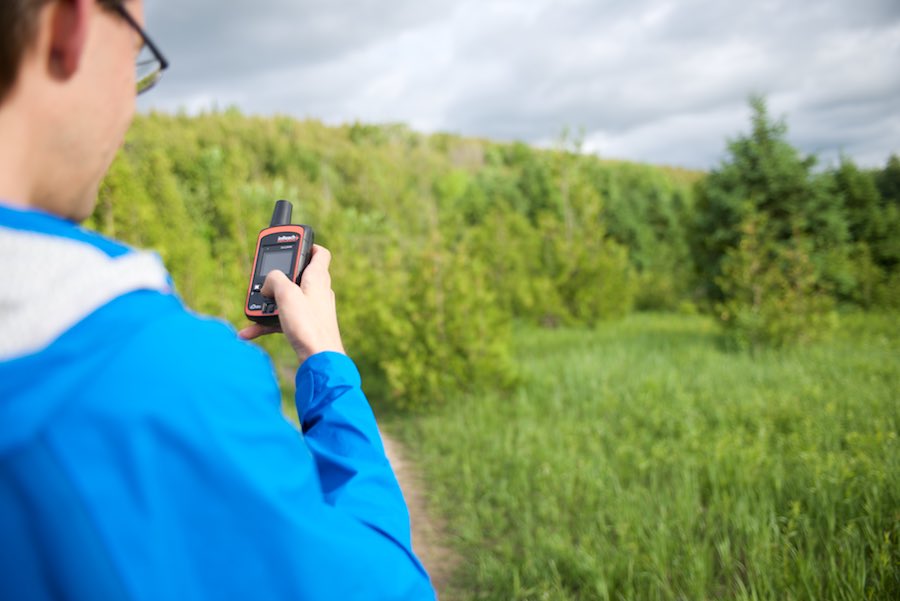Gear Review: DeLorme InReach Explorer

Whether you are day-hiking along a known trail, or canoeing in the furthest reaches, safety should be paramount in your mind when exploring the outdoors. Aside from the obvious First-Aid kit, how do you pre-plan for the worst? Sharing your intended route and travel plan with friends and family is a good start, but we all know how easy it is to get waylaid. Thanks to technology however, we have the ability to leave a string behind us wherever we go to either retrace our route if we get lost, or let others know where we're currently at. To top it off, we can now call for help when the situation gets dire. Enter, the DeLorme InReach Explorer which offers messaging, tracking and SOS capabilities (such as remote tracking and allowing users to communicate via text back and forth with responders at the international 24/7 search-and-rescue monitoring centre), as well as a built-in digital compass, barometric altimeter and accelerometer. For many of my favourite backcountry destinations, as soon as you set foot off the highway, cell reception depletes to nothing leaving your cell phone as a glorified camera. With the DeLorme InReach Explorer, you don't have to be in cell range to send and receive 160-character text messages via satellite or track your location using the global satellite coverage through the Iridium satellite network.
Opening the box for the first time, you will find everything logically laid out with the box's minimalist design. Little notes describe the process to get you up and running without too much fuss. Simply set up an account at explore.delorme.com (which also includes walk-through videos on how to use your InReach) and select a satellite airtime plan (similar to selecting a cell phone plan) via the DeLorme website while letting the device itself lock on to a satellite signal outside. Install the InReach Sync app on your computer to sync the device with your computer (and install updates), calibrate your compass and barometric altimeter and you're ready to go! This may sound like quite few steps but they were quite painless to do. Just don't pull the InReach Explorer out of the box for the first time a few hours before leaving for a weekend adventure.
The unit has about 100 hours of battery life using the default settings (Updates every 10 minutes) with a clear signal (if there is more coverage, it might have to work harder) and charges via USB which can be connected to either your laptop, or 'USB to wall jack' charger. I found it only took 2.5 hours to charge a fully drained battery which is built-in and non-removable. The flexibility of being able to charge via USB is great in case you grab it at the last second as you head out the door and find the battery is dead. You can charge it in the car on the way to the trailhead, or charge it on the go via a solar charger, or power it via external USB battery. The InReach Explorer is waterproof (IP67 - 1 meter for 30 minutes), dustproof and impact resistant.
So what can you do with a DeLorme InReach Explorer? Here's what is available...
- Time: Current time
- Sending indicator: to let you know what it is up to
- GPS signal indicator: Depending on signal strength you could have a 2D or 3D fix
- Messages waiting icon: to let you know if you have any incoming messages to read
- Bluetooth indicator: to let you know if it is enabled and connected
- Charging indicator
- Tracking indicator: to let you know that it is sending updates to the Explore website
- Routes: You can plan your trip in advance using the Explore website and then use your InReach to follow them
- Tracking: Default interval for sharing is every 10 minutes
- Trip Info: Tallies up Trip time, Time moving, Trip distance, max speed, average moving speed and Odometer
- Map: To look at your waypoints, track points, messages and log
- Messages: To set up messages via Twitter, Facebook, MapShare, e-mail or texting
- Waypoints: To mark points of interest, which sync back and forth from the Explore website
- Social: A quick way to send updates to social media
- Compass: Speed, elevation, heading and distance to destination if you are tracking
- SOS: To call for help (don't worry, accidentally selecting this will still timeout after a few seconds unless you actively select 'emergency')
- Check: To see when the next scheduled message fetch is, as well as manually forcing a check
- Contacts: Your address book
- Location: Current location
- Preset: A quick and handy way to send preset messages
- Data use: To see how much you have used the device on your plan
Don't worry about accidentally activating the unit if it is in your pocket or pack. There is a switch you have to physically slide before you can trigger the SOS button. All of the buttons are also locked out by default until you press the power button, then choose the 'Unlock' option using the direction pad. This helps conserve battery power in case you're accidentally pressing against it throughout the day.
Sending messages via social media and texting usually took a minute or two and you would hear an audible chirp as confirmation that the message sent successfully. Included with your account is the ability to share your route in real-time at share.delorme.com/YourAccountName. This is a pretty nifty feature to let your friends and family know how you're tracking at all times.
The tracking ability of the InReach Explorer was excellent, and it even now has the ability to import .GPX files so that you can follow pre-planned routes and know exactly how far away you are from the next waypoint. The only downfall is that the unit's internal memory doesn't have enough space to store topographical maps. The InReach Explorer's "Map" functionality uses a grid-based navigation in conjunction with the compass to keep you on track. If you want to have a more robust system with topographical maps, you will need to download DeLorme's Earthmate app and pair the InReach with the device wirelessly.
Using the Earthmate app (a free app that lets you pair your iOS or Android device with your InReach via Bluetooth) was one of my favourite things about the InReach Explorer. Just pair the two devices as normal and the Earthmate app will let you remotely control the InReach explorer allowing you to keep it safely tucked away in your pack. Browsing your current position via the map, or updating your current status via social media won't cause much battery drain via your phone as you are using the InReach Explorer to do the heavy lifting regardless of cell signal strength. The current map, sending a message via social media (or texting), setting up tracking (and share it via the webpage), your history and sending an SOS is all just a tap away using the app. The best feature of the app is the ability to type messages with your regular on-screen keyboard without having to use the InReach's controls to spell everything out. The app itself is only 20MB, but also needs about 1GB of storage space to include maps and other data.
One small complaint I have with the Earthmate app, is that it doesn't show you your InReach's current battery level while using it. You will have to dig it out of your pack to check on that.
Once at the end of the day after a long hike my iPhone and InReach somehow lost their Bluetooth connection. While looking at the Earthmate app, I was staring at a half finished hike worried that all the data had been lost. Upon re-pairing the two devices, Earthmate synced up and I was relieved to have the entire hike as if nothing had gone wrong.
DeLorme's subscription plans (no contract required) for all inReach products, allow users to pay for satellite service only when they need it, on a monthly basis (Plans start at $16.95 per month for the safety service and go up to $69.95 per month for the highest service level).
I highly recommend the DeLorme InReach Explorer. Letting friends and family know where and how you are by being in direct communication with them is fantastic. The ability to communicate directly to first responders is also invaluable to let them know just how serious the issue is, and where exactly you are located (use responsibly!).
Stay connected with the latest news from DeLorme on Facebook and Twitter and head over to InReach Canada for more information.













